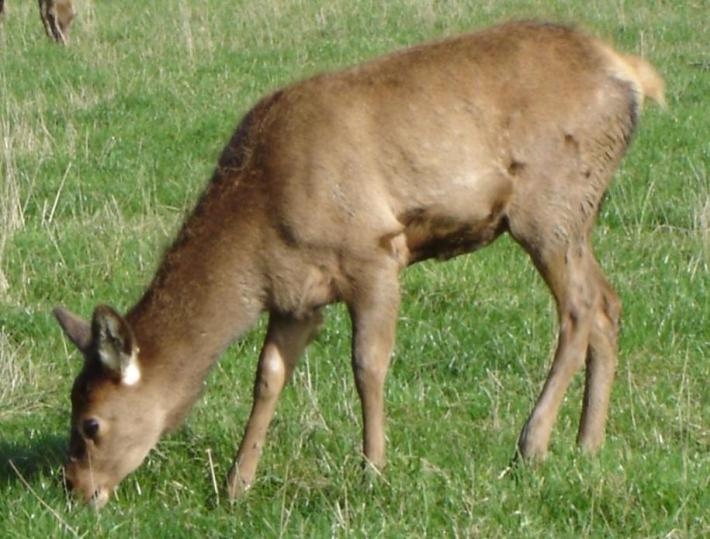
The deer industry history has been characterised by boom and bust cycles, as this new animal industry endeavoured to develop a significant position in NZ's livestock base.
Numbers have fallen significantly from earlier highs, but are now at levels where demand is struggling to be satisfied. Both products prices of venison and velvet are at sustainable levels, and the challenge for DINZ will be encourage growing volumes at reasonable prices.
The new chairman Andy MacFarlane has bought a fresh approach to this industry, looking for better on farm productivity, and ideas how deer can fit in with other livestock classes.
Farmer not willing or able to invest in the dairy sector, should be looking how deer can fit into their farming operation, and how it would diversify the livestock portfolio.
An expected shortfall in NZ venison production this season because of a drop in deer numbers should lead to prices stabilising and possibly rising, Southland deer farmers were told last week. Deer Industry NZ venison marketing manager Innes Moffat said with venison production expected to be similar to last season, there would be a gap between demand and supply. Last year the shortfall was met by stored surplus from the previous season but because that buffer had been used, it was unclear how the gap would be filled this year so prices should remain high, Mr Moffat said.
Indications were that restaurant sales, NZ production, prices, and importers' expectations were "stable to improving", he said. DINZ chairman Andy Macfarlane echoed a call by Alliance Group chairman Owen Poole for farmers to pick and support one meat processor to remove uncertainty from the industry reports The Southland Times.
Mr Macfarlane said DINZwas creating working groups to explore areas such as animal health, genetics, feeding, the environment, processing, and farm management, with the goal to find ways to boost on-farm productivity to ensure the industry was still making money in 10 to 20 years. The organisation's goal was to inspire the NZ deer industry to profitably grow and market the world's best red meat by the premium positioning of venison, he said.
While the industry had shrunk in the past few years, base numbers suggested that had bottomed out and farmer confidence was growing – deer remained competitive and had a niche in farming in NZ, Mr Macfarlane said. It was no longer a question of the deer sector competing with dairy, but looking at how deer farming fitted in with other livestock classes, he said.
No chart with that title exists.
5 Comments
yeh, no i dont think so. Venison is %20 prime cut %80 mince and salami, its going to continue to be a rolla-coaster ride.
Not sure where you got those figures from AndrewJ, must be and old stag you are processing! Deer Industry NZ reports that an average carcase returns, 15% prime cuts, 30% leg cuts, 25% valuable shoulder cuts, and 30% trim and manufacturing products. And all at double the beef, and 30% more in schedule value, seems good to me. Also independent gross margin analysis of different livestock, shows deer second only to dairy.
Tony Chaston
Tony, i got it from the deer industry in 1987, they may have got better at creating more high value cuts. I have a deer farm its still got no deer on it. Im watching and weary of past fluctuations. Also its difficult for me to get my yealings heavy enough to meet the short window and get the high prices early in the spring. I think it would be easier to farm deer in the south island and do like having some diversity. I dont know how good those leg cuts are they may be pushing the envelope a bit there, I also dont know what they mean by high value shoulder cuts. There has been some great work by some farmers marketing venison, I will keep an eye out, thanks for the info.
Hello Andrewj
You are correct when you say it's difficult to meet the period of peak demand in Europe which is when the venison schedule is at it's highest. The deer industry continues work aimed at bringing hind conception dates forward, improving feeding regimes and giving farmers access to faster growing genetics so we can get more deer heavier earlier to hit the chilled season.
You're also correct when you say that things have changed alittle since 1987. NZ marketing companies export a diverse array of further processed cuts around the world. Higher value shoulder items include portion controlled steaks taken from some of the more tender muscles out of the shoulder, netted and tied boneless shoulder roasts packed for European supermarkets, and hand-cut goulash for upper-end German restaurants.
And finally - deer are different to cattle in that steaks from the leg are extremely tender. In the most recent study by Agresearch, chilled and aged venison leg steaks recorded an average shear-force measurement of between 3 and 4 kg/F. Acceptable tenderness is 8 kg/F. Farm-raised venison leg steaks are very good eating.
kind regards
Innes Moffat
Good to see more diversity in our agriculture sector anyway. It makes the sector more adaptable to accumulating and accelerating worldwide events on many fronts.
As a small country we have to think smaller - but with great ideas - a “100%NZpure Economy”
We welcome your comments below. If you are not already registered, please register to comment
Remember we welcome robust, respectful and insightful debate. We don't welcome abusive or defamatory comments and will de-register those repeatedly making such comments. Our current comment policy is here.